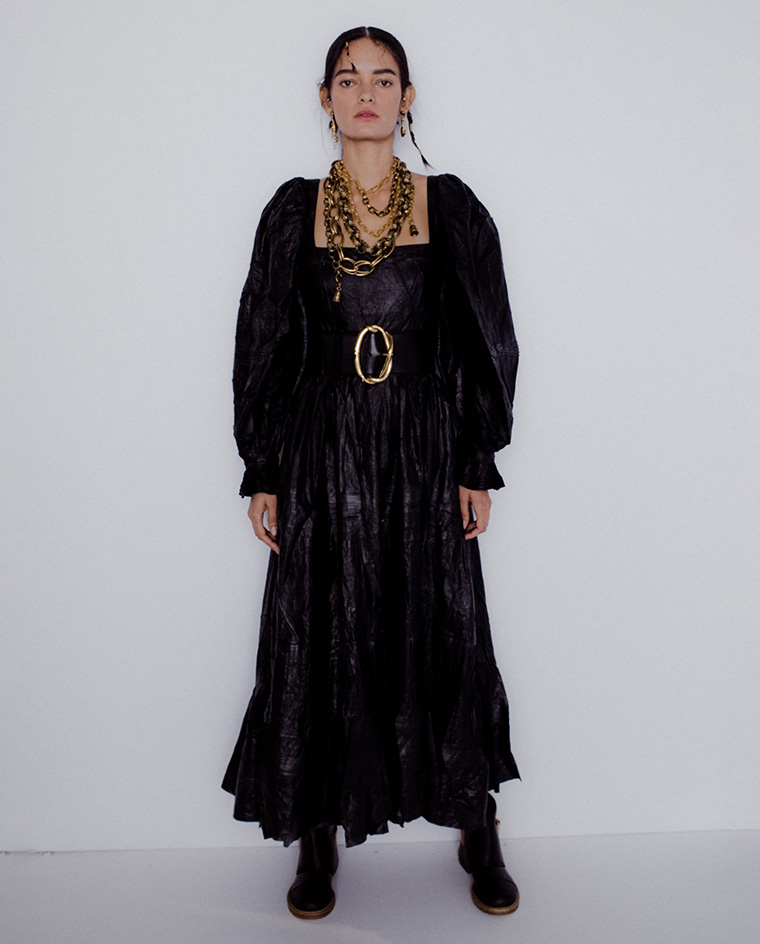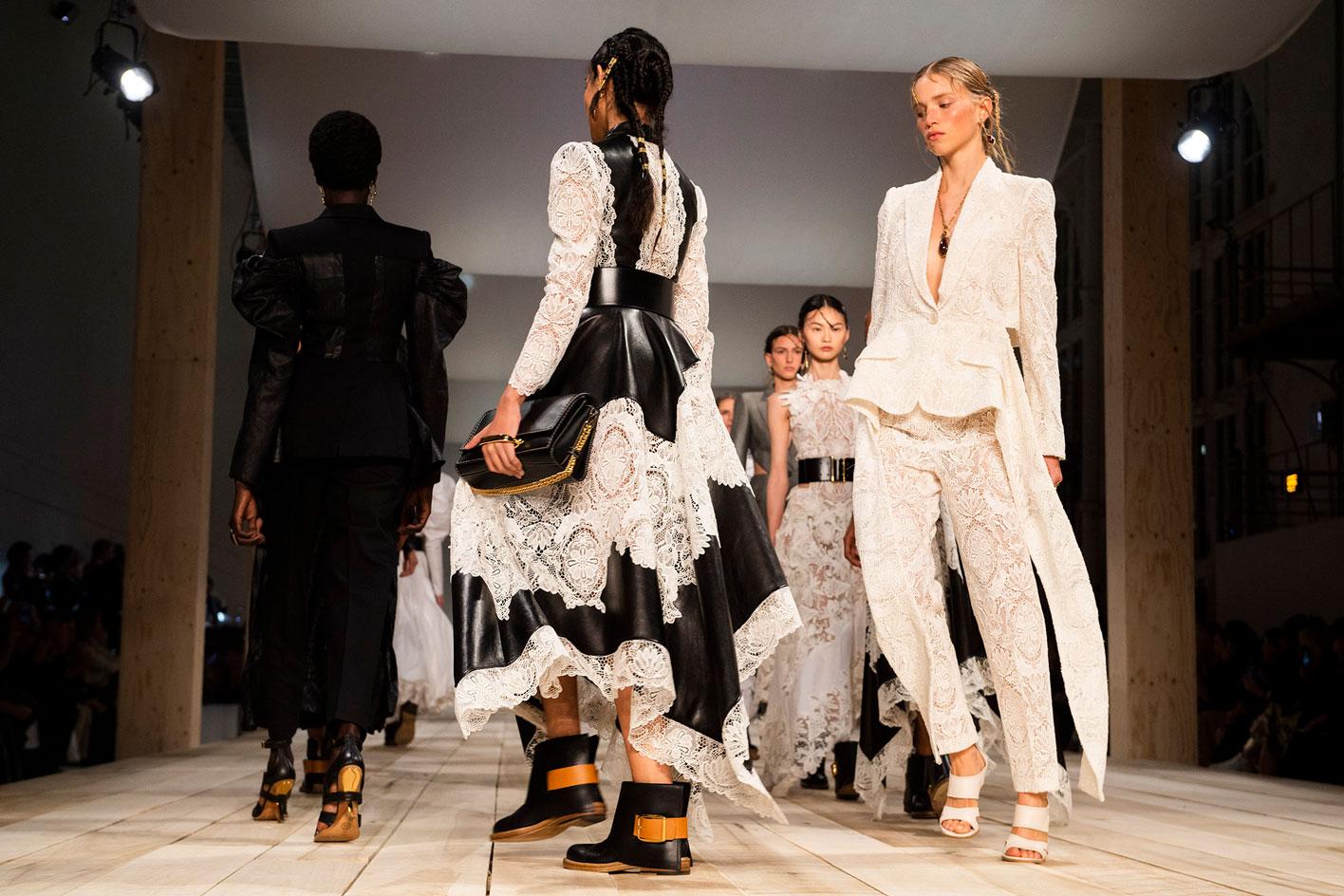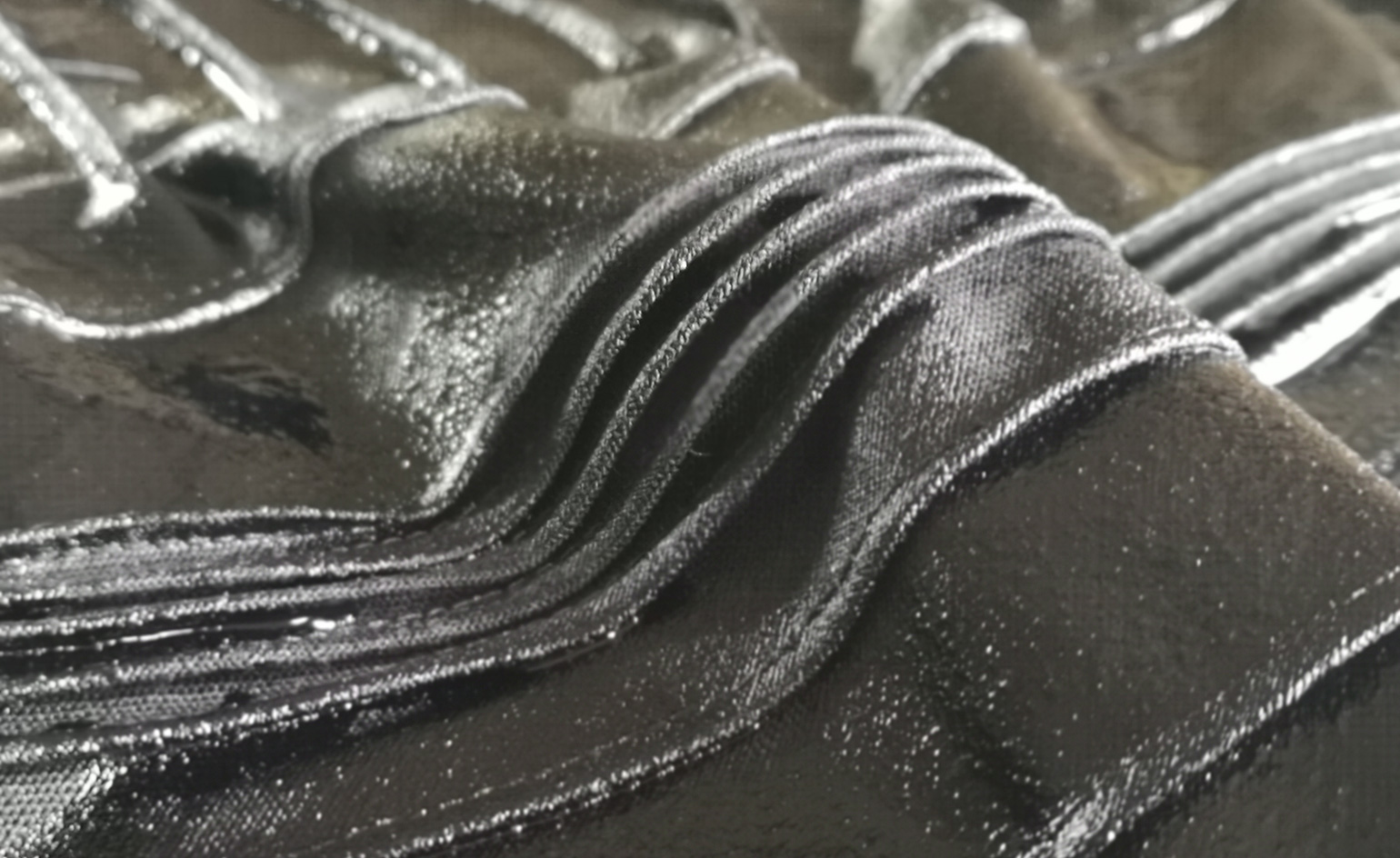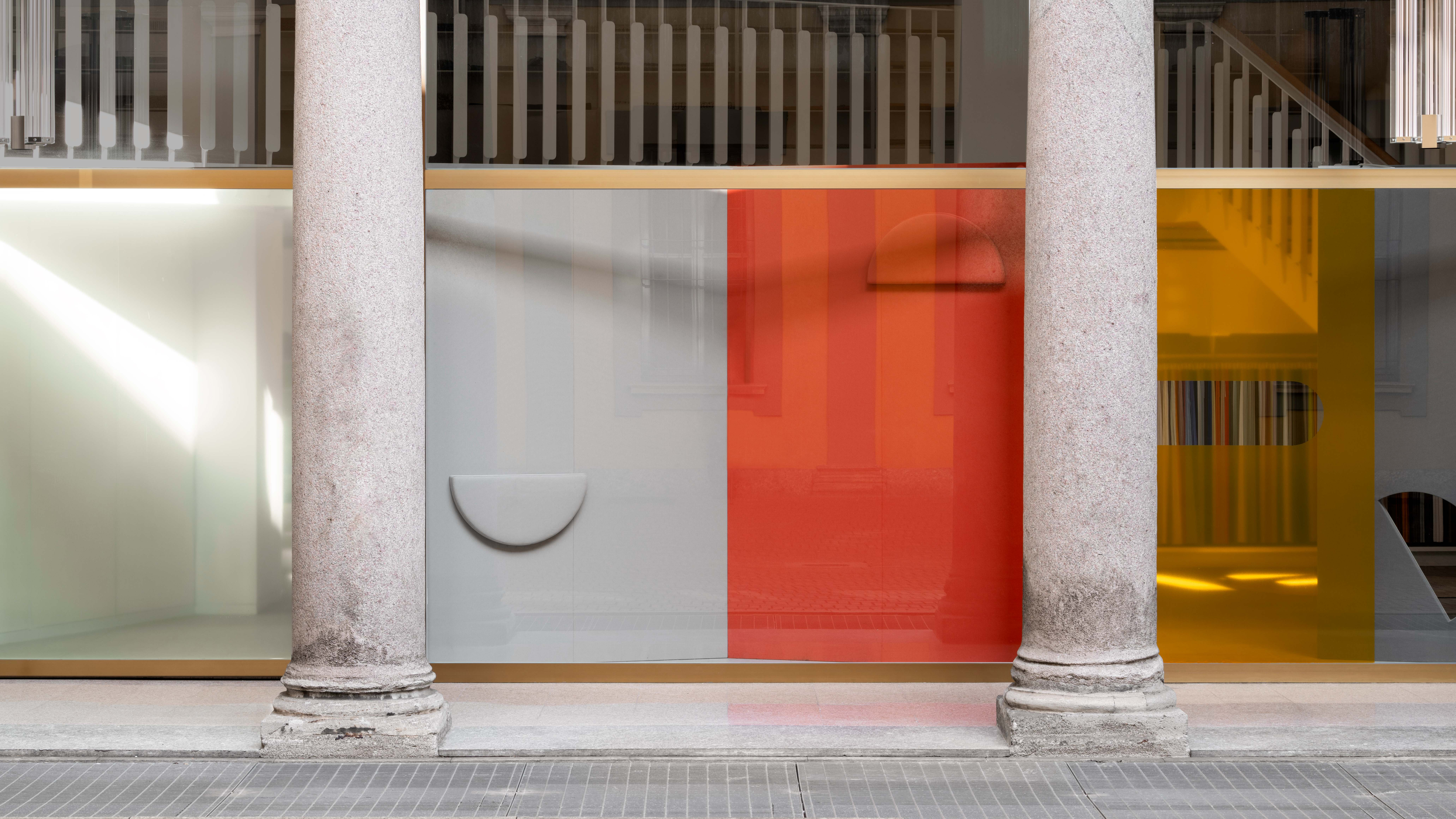The beetling technique behind Alexander McQueen’s spring offering
Beetling was one of the painstaking techniques celebrated by creative director Sarah Burton in Alexander McQueen's tradition and community-focused S/S 2020 collection
Pintucked patterned pieces of an Alexander McQueen S/S 2020 unstitched linen dress are hand painted and sumberged in potato starch
A scene capturing the creative process behind Alexander McQueen’s S/S 2020 collection is particularly prescient today: every single person from the London-based brand’s employed team sat as a community, and hand embroidered over abstract dancing girl sketches, drawn by Central Saint Martins University students, which twirled across Irish linen dresses. ‘I love the idea of people having the time to make things together, the time to meet and talk together, the time to reconnect with the world,’ creative director Sarah Burton said of the inspiration behind collection.

A dress from Alexander McQueen’s S/S 2020 collection, created using beetling
For Burton, supporting traditional technique and artisanal community was essential for spring. McQueen himself had a penchant for turning tradition on its head, whether it was the tenets of tailoring, historical narratives or the concept of the fashion show. Take S/S 2020’s lacework, which embellished ivory damask linen draped handkerchief skirts or trimmed peplum jackets, woven by Thomas Ferguson, the last remaining damask linen weaver in Ireland. ‘The connection between the clothes was the time it took to make them,’ Burton added of the painstaking processes used to create each piece. The collection also featured suiting in silver grey mohair sharkskin, a heritage British menswear cloth woven by a worsted mill in the north of England.
For spring, Burton also looked back to the brand’s own history, reinterpreting silhouettes and toiles from its archive. The collection’s opening look – a puff sleeve dress inspired by an A/W 2000 Eshu dress – had been reimagined in ivory linen, which was bleached when laid out in fields by the sun and the moon. The piece had also undergone a complex beetling process – a technique where linen pieces are hand painted and submerged in potato starch, before being wrapped and tied around a Irish beech timber beam, and pounded by blocks for a number of days. This was carried out by William Clark, the oldest linen mill in Ireland and the last remaining specialist in garment beetling.
RELATED STORY

A number of painstakingly beetled pieces feature in the S/S 2020 collection, including a dark deconstructed jacket with exploded sleeves and a black draped blazer festooned with toiles taken from a rose dress in McQueen’s A/W 2019 collection. They mark the first time that William Clark has ever beelted an entire garment. Each piece takes on a lustrous sheen – a resplendent result of the hand-honed process. The silhouettes in the spring offering are a symbol of community, slow-paced creativity and tradition. They’re tenets we’re all holding with even deeper significance today.

The beetling process creates a flattened creased effect and lustrous sheen on linen
INFORMATION
Wallpaper* Newsletter
Receive our daily digest of inspiration, escapism and design stories from around the world direct to your inbox.
-
 Kapwani Kiwanga transforms Kvadrat’s Milan showroom with a prismatic textile made from ocean waste
Kapwani Kiwanga transforms Kvadrat’s Milan showroom with a prismatic textile made from ocean wasteThe Canada-born artist draws on iridescence in nature to create a dual-toned textile made from ocean-bound plastic
By Ali Morris
-
 This new Vondom outdoor furniture is a breath of fresh air
This new Vondom outdoor furniture is a breath of fresh airDesigned by architect Jean-Marie Massaud, the ‘Pasadena’ collection takes elegance and comfort outdoors
By Simon Mills
-
 Eight designers to know from Rossana Orlandi Gallery’s Milan Design Week 2025 exhibition
Eight designers to know from Rossana Orlandi Gallery’s Milan Design Week 2025 exhibitionWallpaper’s highlights from the mega-exhibition at Rossana Orlandi Gallery include some of the most compelling names in design today
By Anna Solomon